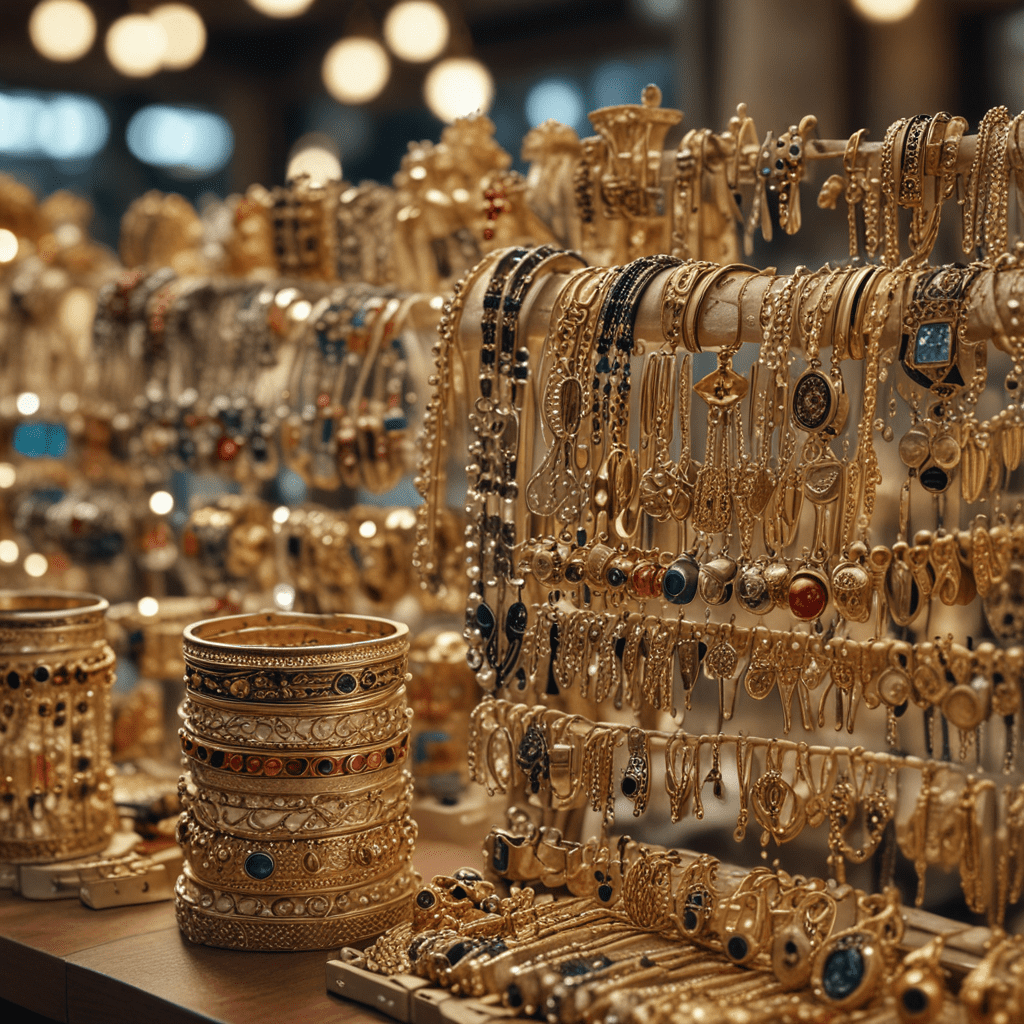
Bahrain's Traditional Jewelry and Metalwork Artisans
Bahrain, a nation with a rich history and culture, is renowned for its exquisite traditional jewelry and exceptional metalwork. The skill and craftsmanship of Bahraini artisans have been passed down through generations, resulting in a vibrant and dynamic art form that holds immense cultural significance. This article explores the captivating world of Bahrain's traditional jewelry and metalwork artisans, shedding light on their techniques, inspirations, and the role their creations play in Bahraini society.
Historical Context and Cultural Significance
Bahrain's jewelry-making tradition dates back to ancient times, influenced by the region's maritime trade routes and its proximity to civilizations like Dilmun and Mesopotamia. Over centuries, Bahrain's artisans skillfully combined local and international techniques, creating a distinctive style that reflects Bahrain's cultural heritage and identity. Traditional jewelry holds great symbolic value in Bahraini society, often representing family ties, social status, and religious beliefs.
Types of Traditional Jewelry
The diverse array of traditional Bahraini jewelry encompasses a range of styles and materials, each with its own unique characteristics.
Gold and Pearl Jewelry
Bahraini jewelers are celebrated for their exceptional gold and pearl craftsmanship. Pearls have been a vital part of Bahrain's economy for centuries, and gold is highly valued for its beauty and durability. Traditional gold and pearl jewelry often features intricate designs and delicate filigree work.
Silver and Stone-Inlaid Jewelry
Silver is another popular material used in Bahraini jewelry. Artisans skillfully combine silver with gemstones and semi-precious stones, such as turquoise, coral, and agate. These pieces often showcase elaborate inlay work and are known for their bold colors and unique designs.
Enamel and Filigree Jewelry
Enameling is an ancient technique involving the fusion of colored glass onto metal. Bahraini artisans create stunning pieces using vibrant enamel colors combined with intricate filigree work, a technique that involves twisting and shaping fine metal threads into delicate designs.
Contemporary Influences and Evolution
While traditional techniques and designs remain a cornerstone of Bahraini jewelry-making, contemporary artisans are also incorporating modern influences into their work. They experiment with different materials, such as titanium and carbon fiber, to create innovative pieces that push the boundaries of traditional craftsmanship. Additionally, they draw inspiration from global trends and incorporate international design elements into their creations.
Role in Bahraini Society
Traditional jewelry plays a significant role in Bahraini society, serving as both adornment and symbolism. It is an integral part of cultural celebrations, such as weddings and religious festivals, where it represents family ties, status, and heritage. Bahraini jewelry also serves as a form of social expression, allowing individuals to express their personal style and cultural identity.
Preserving the Craft
Recognizing the importance of preserving this traditional craft, the Bahraini government has implemented several initiatives to support artisans and workshops. Training programs and workshops aim to pass on traditional techniques to younger generations, ensuring the continuity of this cultural heritage. Additionally, government support for exhibitions, craft fairs, and cultural events provides a platform for artisans to showcase their work and connect with customers.
Tourism and Economic Impact
Bahrain's traditional jewelry and metalwork have become popular tourist attractions, drawing visitors from around the world who appreciate the exquisite craftsmanship and unique designs. The industry contributes to Bahrain's economy by providing income for artisans, supporting local businesses, and promoting cultural tourism. Visitors often purchase jewelry as souvenirs or collectors' items, helping to preserve the craft while showcasing Bahrain's cultural heritage to the world.
Conclusion
Bahrain's traditional jewelry and metalwork artisans are masters of their craft, creating exquisite pieces that embody the nation's cultural heritage and identity. Their exceptional skills and techniques have been passed down through generations and continue to evolve, ensuring that this vibrant art form remains a cherished part of Bahraini society. The Bahraini government and cultural organizations are actively involved in preserving and promoting this craft, recognizing its significance as a cultural treasure and a valuable contributor to the nation's economy and tourism sector.
Frequently Asked Questions
Q: What is the most popular type of traditional Bahraini jewelry?
A: Gold and pearl jewelry is the most iconic and widely recognized type of Bahraini traditional jewelry.
Q: What materials are commonly used in Bahraini jewelry-making?
A: Gold, silver, pearls, gemstones, enamel, and filigree are the primary materials used in Bahraini jewelry-making.
Q: How can I purchase traditional Bahraini jewelry?
A: You can find traditional Bahraini jewelry at local workshops, craft fairs, and government-sponsored exhibitions.
Q: What are some ways to identify authentic Bahraini jewelry?
A: Look for intricate craftsmanship, unique designs, and traditional materials such as gold, pearls, and enamel.
Q: How can I support Bahraini jewelry artisans?
A: Attend craft fairs and exhibitions, purchase their products, and spread awareness about the importance of preserving traditional crafts.


